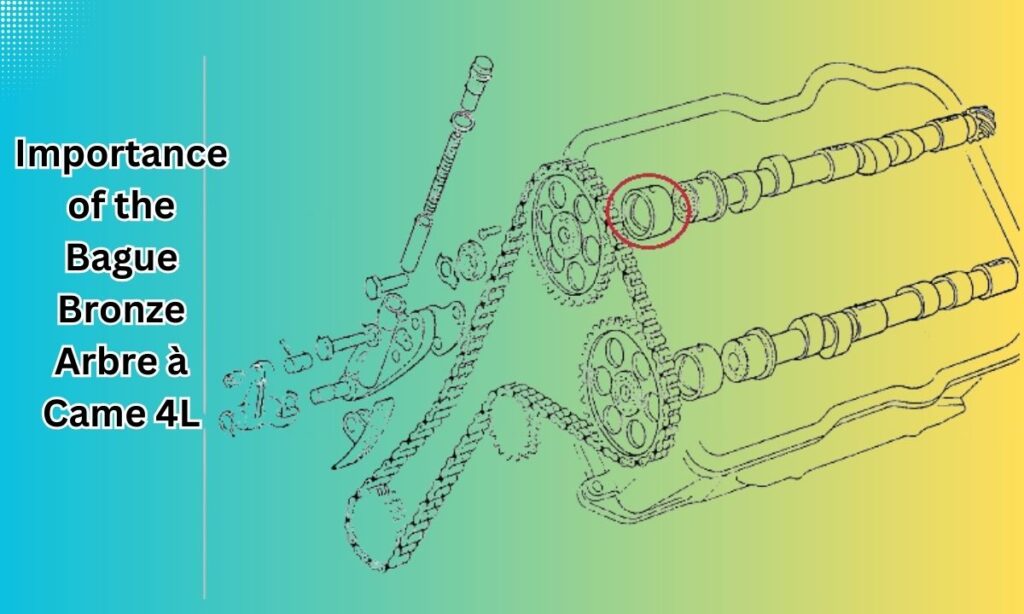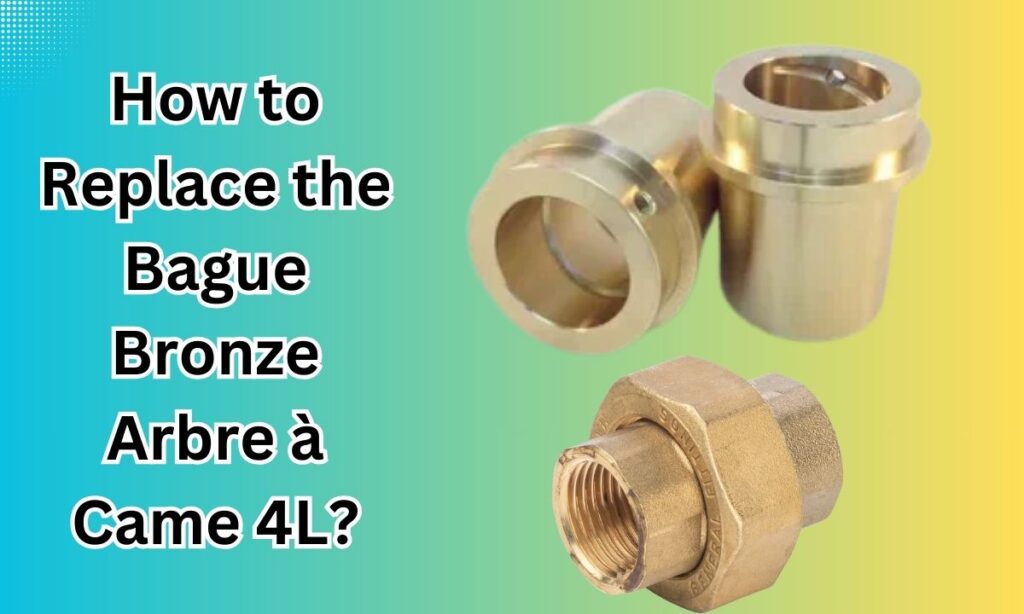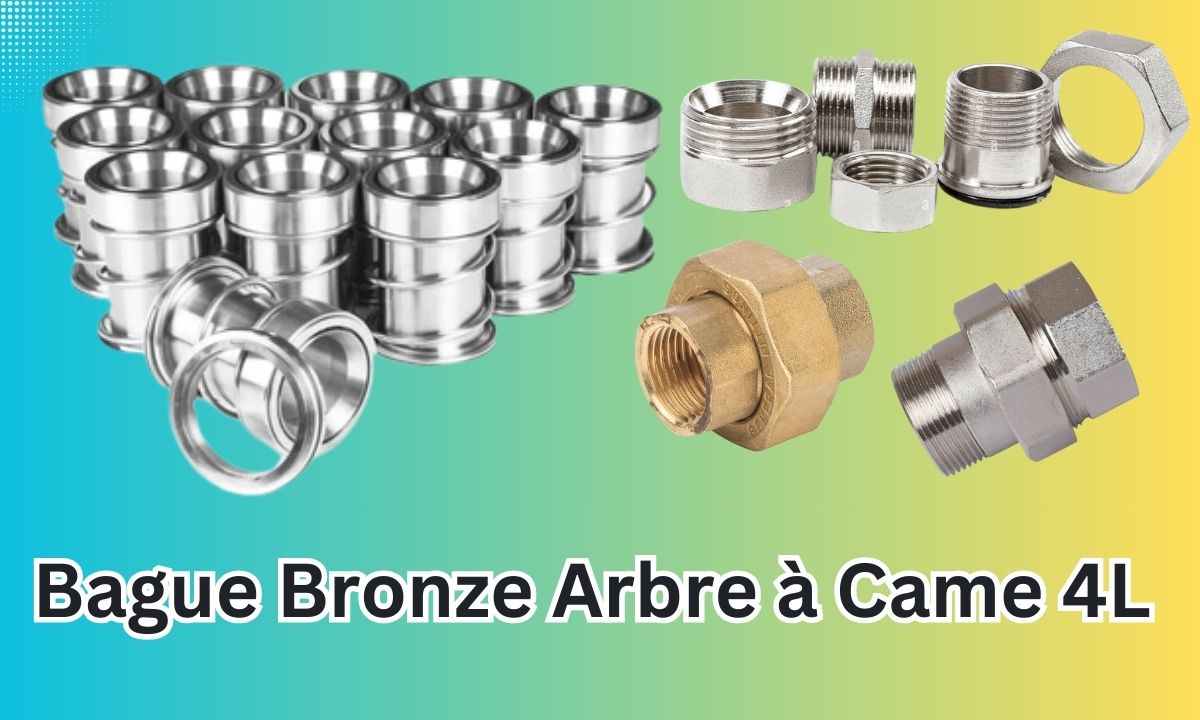The Renault 4L’s bague bronze arbre à came 4L represents a critical engine component that ensures optimal mechanical performance and longevity.
This specialized bronze bushing plays a pivotal role in maintaining precise camshaft alignment and reducing friction within the vehicle’s engine system.
Understanding its function, maintenance, and replacement is essential for preserving the legendary reliability of this iconic French automotive classic.
What is the Bague Bronze Arbre à Came 4L?
A specialized bronze bushing engineered for exceptional camshaft support characterizes this remarkable component.
Metallurgical expertise transforms bronze into a sophisticated mechanical interface. Its cylindrical design provides unparalleled structural integrity within the engine block.
Mechanical engineers selected bronze for extraordinary material properties. Temperature resistance and mechanical durability distinguish this specialized bushing. It creates a seamless connection between moving engine components. Friction reduction becomes its fundamental operational principle.
Importance of the Bague Bronze Arbre à Came 4L
The mechanical backbone of the Renault 4L’s engine resides within this component. Precision engineering manifests through its intricate design and functionality.

Every mechanical interaction depends on its perfect performance.Critical performance parameters rely entirely on this bronze marvel. Camshaft alignment determines engine efficiency and longevity.
Lubrication management becomes a sophisticated mechanical dance. Professional mechanics recognize its transformative impact on vehicle reliability.Thermal management represents another crucial function. Bronze material dissipates heat with exceptional efficiency.
READ THIS BLOG: R5TX Pompe a Essence Electrique Forum: A Comprehensive Guide for Automotive Enthusiasts
Signs That the Bague Bronze Arbre à Came 4L Needs Replacement
Engine performance provides definitive diagnostic signals. Unusual grinding sounds indicate potential mechanical deterioration. Sudden power reduction suggests imminent bushing failure.
Oil leakage around camshaft regions represents a critical warning mechanism.Experienced mechanics perform comprehensive visual assessments. Surface irregularities reveal underlying mechanical issues.
Microscopic cracks or excessive wear demand immediate intervention. Early detection prevents extensive and expensive engine damage.Unusual vibration patterns suggest potential bushing failure. Reduced engine responsiveness becomes another critical indicator. Professional diagnostic tools enhance detection capabilities.
How to Replace the Bague Bronze Arbre à Came 4L?
Replacing the bague bronze arbre à came 4L requires precision, specialized tools, and a systematic approach to ensure optimal Renault 4L engine performance.

This delicate process involves carefully removing the old bronze bushing and installing a new one to maintain critical camshaft alignment and reduce mechanical friction.
Proper replacement preserves the engine’s integrity and extends the vehicle’s operational lifespan.
Step 1: Tools and Preparation
Comprehensive tool preparation ensures successful replacement. Specialized socket wrench sets become essential instruments.
Create a meticulously clean workspace. Battery disconnection prevents electrical system complications.Organize workspace with systematic precision.
Proper lighting enhances visual inspection capabilities. Protective equipment prevents potential mechanical injuries. Temperature considerations impact tool performance.
Step 2: Access the Camshaft
Careful component disassembly requires precision. Remove valve covers and timing belt mechanisms. Gentle manipulation prevents inadvertent mechanical damage.
Patience transforms complex tasks into manageable procedures.Document each removal step photographically.
Systematic approach prevents reassembly complications. Label removed components for precise repositioning. Mechanical memory supports successful reconstruction.
Step 3: Remove the Old Bushing
Specialized removal tools become critical instruments. Controlled extraction prevents surrounding surface damage.
Mechanical stress management defines successful removal techniques. Gentle, calculated movements protect intricate engine architecture.Apply controlled mechanical force systematically.
Avoid lateral stress during the extraction process. Preserve surrounding mechanical surfaces meticulously. Precision determines successful component removal.
Step 4: Install the New Bushing
Precise lubrication facilitates smooth installation processes. Meticulously align the replacement bushing. Specialized installation tools guarantee perfect positioning.
Mechanical alignment determines future performance reliability.Verify dimensional specifications before installation.
Minimal tolerance variations impact performance critically. Apply uniform installation pressure systematically. Prevent microscopic alignment deviations.
Step 5: Reassemble the Engine
Methodical reassembly follows strict mechanical protocols. Adhere to manufacturer torque specifications precisely. Each component returns to its exact original position.
Systematic reconstruction prevents potential future failures.Cross-reference manufacturer documentation during reassembly.
Torque specifications require absolute precision. Sequenced reassembly prevents mechanical misalignment. Systematic approach guarantees optimal performance.
Step 6: Test the Engine
Battery reconnection initiates comprehensive testing. Listen carefully for smooth operational sounds. Professional diagnostic procedures verify successful replacement.
Mechanical performance reveals installation quality.Conduct multiple operational cycles. Monitor temperature and performance parameters.
Professional diagnostic equipment enhances verification processes. Comprehensive testing ensures mechanical reliability.
Maintenance Tips for the Bague Bronze Arbre à Came 4L
| Maintenance Aspect | Recommended Action | Frequency | Expected Benefit |
| Oil Quality | Use high-grade engine oil | Every 5,000 km | Reduces friction, prevents wear |
| Lubrication | Apply specialized lubricant | During each service | Ensures smooth camshaft rotation |
| Visual Inspection | Check for surface irregularities | Every 10,000 km | Early wear detection |
| Temperature Monitoring | Assess engine heat distribution | During routine service | Prevents thermal stress |
| Bushing Alignment | Professional precision check | Annually | Maintains mechanical integrity |
| Replacement Criteria | Assess wear and performance | Every 50,000-75,000 km | Prevents potential engine failure |
| Professional Diagnostics | Comprehensive engine scan | Bi-annually | Identifies potential issues early |
| Torque Specification | Verify manufacturer’s specifications | During replacement | Ensures proper installation |
| Vibration Analysis | Monitor engine vibration patterns | Every service | Detects potential misalignment |
| Cooling System | Maintain optimal coolant levels | Every oil change | Prevents overheating |
Frequently Asked Questions
How Often Should the Camshaft Bushing Be Replaced?
Replacement frequency depends on vehicle usage and maintenance history. Typically, 50,000 to 75,000 kilometers represents a standard replacement interval.
Can I Replace the Bushing Myself?
Advanced mechanical knowledge becomes essential. Professional assistance guarantees proper installation and prevents potential damage.
What Happens If I Ignore Bushing Wear?
Neglecting wear leads to catastrophic engine failure. Expensive repairs and complete engine replacement might become inevitable.
Are Original Manufacturer Parts Always Necessary?
High-quality aftermarket alternatives can perform effectively. Original manufacturer parts provide optimal performance guarantees.
How Do I Detect Early Bushing Wear?
Professional inspections and continuous performance monitoring become critical. Unusual sounds or performance fluctuations indicate potential issues.
Conclusion
The bague bronze arbre à came 4L transcends its physical dimensions. It represents a pinnacle of mechanical engineering excellence. Precise understanding and maintenance preserve the Renault 4L’s legendary performance characteristics.
Mechanical heritage lives through meticulous care. Each maintenance procedure honors engineering innovation. Understanding transforms mechanical components into living history. Renault 4L continues its legendary journey through passionate preservation.

David is a seasoned SEO expert with a passion for content writing, keyword research, and web development. He combines technical expertise with creative strategies to deliver exceptional digital solutions.















